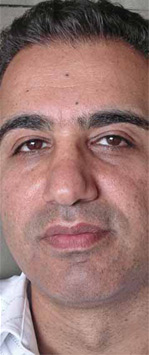
 |
| Masoud Ahmadi Managing Director of Tecteon Technologies |
Masoud Ahmadi Managing Director of Tecteon Technologies believes education is the key to overcoming the threat of acoustic shock
The EU Noise at Work Directive is now in effect and any business that does not adhere to the strict guidelines imposed by it will face heavy fines and potentially find themselves in costly legal battles with staff. The Directive makes it compulsory for employers to provide hearing protection equipment for workers to ensure that they are not exposed to volumes in excess of an average of 85dB SPL (sound pressure level) over an 8-hour period. This is good news for call centre workers, the emergency services or anyone who finds themselves glued to a headset all day.
There is, however, another threat to the headset wearer’s well-being that has implications that stretch far beyond hearing damage and is, as yet, not covered by the EU Noise Directive. That threat is acoustic shock. Acoustic shocks are freak bursts of sound that are of a short duration and a high intensity. The likely causes of these sound bursts include, electronic beeps from fax machines, random electronic pulses, customers tapping into a handset, sneezing or coughing as well as malicious acts such as a customer blowing a whistle down a phone.
These piercing sounds, which take the headset users by surprise, can leave people in severe pain and distress. The challenge is the shock factor. Imagine you are in a motor accident. It is likely that your body will see the collision coming. It therefore has time to prepare itself for it. Your muscles tense instantaneously in order to take the full force of the impact. Had you not tensed, the crash would have sent shock waves through you causing deep nerve damage (i.e. spine/neck injury) as well as other physical injury. Now imagine you are on the phone enjoying a conversation with a friend. Without any warning a high pitched tone emits from your receiver.
Since you have not had a chance to prepare for it, your unprepared hearing system will undergo stress, which can translate into a number of short and long-term side effects.
According to research carried out by the Australian Services Union, repeated exposure to these acoustic shocks - which are accumulative - can lead to a range of potentially debilitating symptoms including, nausea, disturbed balance and vertigo, numbness and twitching of the face and shoulders, tension headaches, intolerance to any loud sound, anxiety, depression and agoraphobia. This is in addition to the immediate pain experienced and more long-term degenerative hearing loss.
As the incidence of acoustic shock grows so does the amount of money that sectors such as the call centre industry shells out in compensation to affected staff members. The latest figures suggest that over £2 million has already been paid out in out-of-court settlements in the UK alone. Globally this figure is said to have reached £10 million. This is of particular concern for the smaller call centres that have less than 50 employees who make up almost 60% of the call centres in UK.
This is a growing problem, and as technologies such as VOIP and Bluetooth continue to grow in popularity, it is one that will start affecting more than just staff at call centres. Headset usage is growing and so it is important that any reseller of headset and telephony equipment understands the nature of the threat and how it can be overcome. This could be further exaggerated by high quality inthe- ear headsets already available in the market.
The challenge that resellers may face is that although many headset manufacturers claim that their equipment protects against acoustic shock they do not provide a complete solution. Up until recently it was believed that there was a direct relationship between volume and the severity of acoustic shocks. Manufacturers of headset equipment have therefore sought to limit the volume of sound that passes through their headsets. This in fact, will provide little to no protection. Additionally the reduction of volume of the headset renders the equipment impractical for the high ambient noise environments of call centres, where operators need to raise the volume at peak times in order to hear the caller and provide a high level of customer service.
The solution is to remove the acoustic shocks themselves and to do this it is necessary to recognise such sounds and eliminate them. At Tecteon we have been focusing on this problem for some time and using a complex algorithm we have managed to create a control device that sits in between the headset and the console that picks up acoustic shocks before they can do any harm and eradicates them.
The real key to solving this problem, however, is education. The call centre industry in particular is relatively young and it has taken some time for the symptoms to be identified and understood. Too many companies are therefore still unaware of the threat of acoustic shock. Resellers that are serious about helping their customers fully benefit from the technology available should check out the Acoustic Safety Programme.
| www.tecteon.com |
